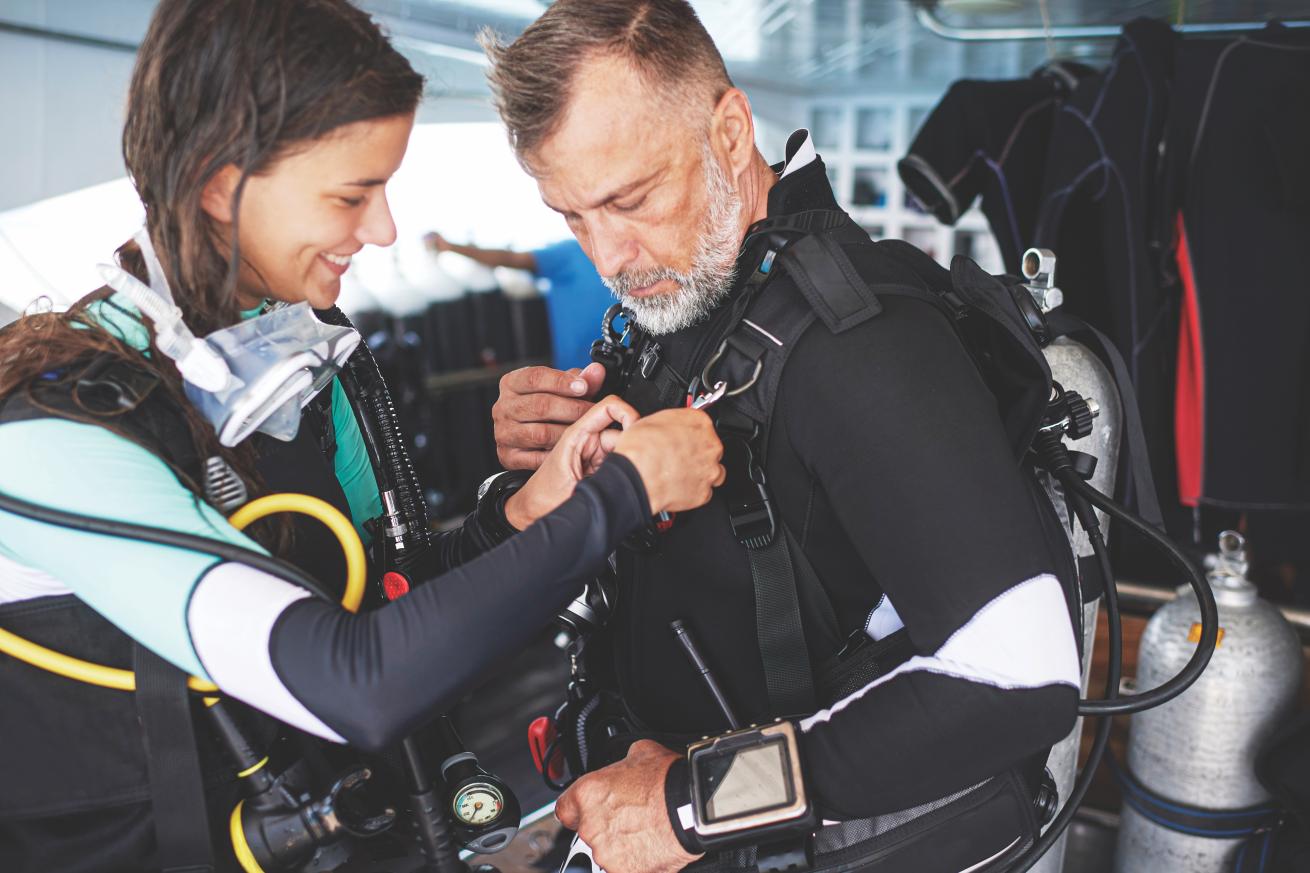ASK DAN: What should I do before and after diving to avoid accidents?

Divers Alert NetworkWhat should I do before and after diving to avoid accidents?
The actions divers take to prepare themselves and inspect their gear on the surface can greatly enhance their safety underwater. Because injuries can occur before or after the dive, safety starts before entering the water and continues after leaving it.
CONDUCT PREDIVE SAFETY CHECKS Whether you are entering the water from a boat or the shore, be sure to complete a predive safety check. A predive safety check is one of the easiest ways to mitigate diving accidents, and should be thoroughly performed before each dive. If you don’t check your gear, you can’t be sure your gear is working before you enter the water. Confirm your BCD is functioning by checking that it successfully inflates, deflates and maintains its volume without leaking. Check your dump valves, oral inflator, power inflator and tank bands for proper functioning. Verify that your tank valve is fully open and that breathing gas is being delivered from the first stager regulator to the second stage. Check your low-pressure hoses for air leaks and test both the primary regulator and the octo-pus. Inspect the high-pressure hose connecting your submersible pressure gauge (SPG), as well as the SPG itself. Make sure that any miscellaneous gear or equipment such as slates, dive computers, wrist gauges, SMBs, spools and reels are properly secured so they don’t go flying when you hit the water. Lastly, complete the same predive check on your buddy’s gear, and have them check yours. This allows a second set of eyes to visually inspect each diver’s equipment and gives both divers the opportunity to become familiar with their buddy’s gear configuration, weight placement and breathing gas quantity at the start of the dive. In the event of an emergency at depth, this information can be vital to assisting your buddy or them assisting you.
PLAN YOUR ENTRY
Plan your approach to the entry point be-fore you get there. If you are on a boat, wet surfaces on the boat deck are a guarantee, but slipping on them doesn’t have to be. Try to maintain three points of con-tact while moving around the boat, taking steady and deliberate steps as you traverse the deck. Take note of trip hazards such as lines, hoses running across the deck, cleats and unsecured dive gear. Avoid damage to your equipment and in-jury to yourself by ensuring all dive gear is stowed in a designated storage area. If you are diving from shore, take simi-lar precautions in identifying a safe path to the water before walking it. Note the layout of natural and artificial features of the area. Mud, slick gravel, eroding sand-banks and even wet grass can be just as slippery as an untextured boat deck. Obstructions like protruding rocks, fallen timber and other debris can cause a diver to trip and even terminate their dive before it starts. If possible, walk to the entry point to confirm its stability before putting on your gear.
FIND YOUR EXIT
Safely exit the water by returning to your original entry point or a preplanned exit point. Knowing your egress spot ahead of time is essential to mitigating any potential risks. If exiting onto land in unfamiliar territory, inspect the area before leaving the water. Coming ashore into the woods with no way to travel back to your starting point, or finding yourself on a rocky shoreline with a cliff face and no way back to the beach, is an accident waiting to happen. If returning to a dive boat, understand that the ladder has the potential to seriously injure a diver’s hand. Pay attention to how the ladder operates before using it, identifying hinges and possible pinch points. Holding onto the rungs of the ladder instead of the side rails is a safe method to avoid a painful learning experience. Keeping the ladder area clear, with only one diver on it at a time, will prevent serious injuries should the diver using the ladder slip and fall backward. Consider that the propeller of a dive boat doesn’t have to be in motion to cause serious in-jury to a diver—a stationary prop still packs a chop. An ascending diver should keep their eyes peeled to be sure they are surfacing a safe distance away from the boat. At the surface, divers should approach the ladder in turn while remaining cautious of the boat’s propeller. Taking the right precautions and making informed decisions—and being diligent and self-aware—will help you navigate the various risks that can present themselves before, during and after a dive.
For more information, visit dan.org










